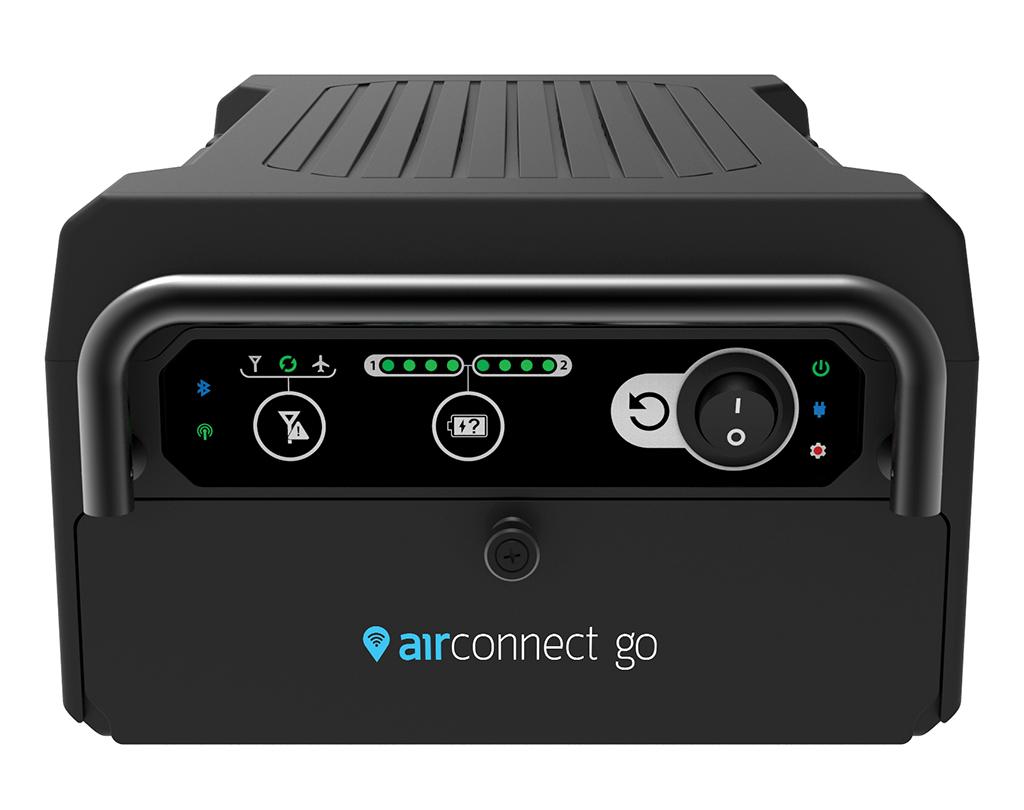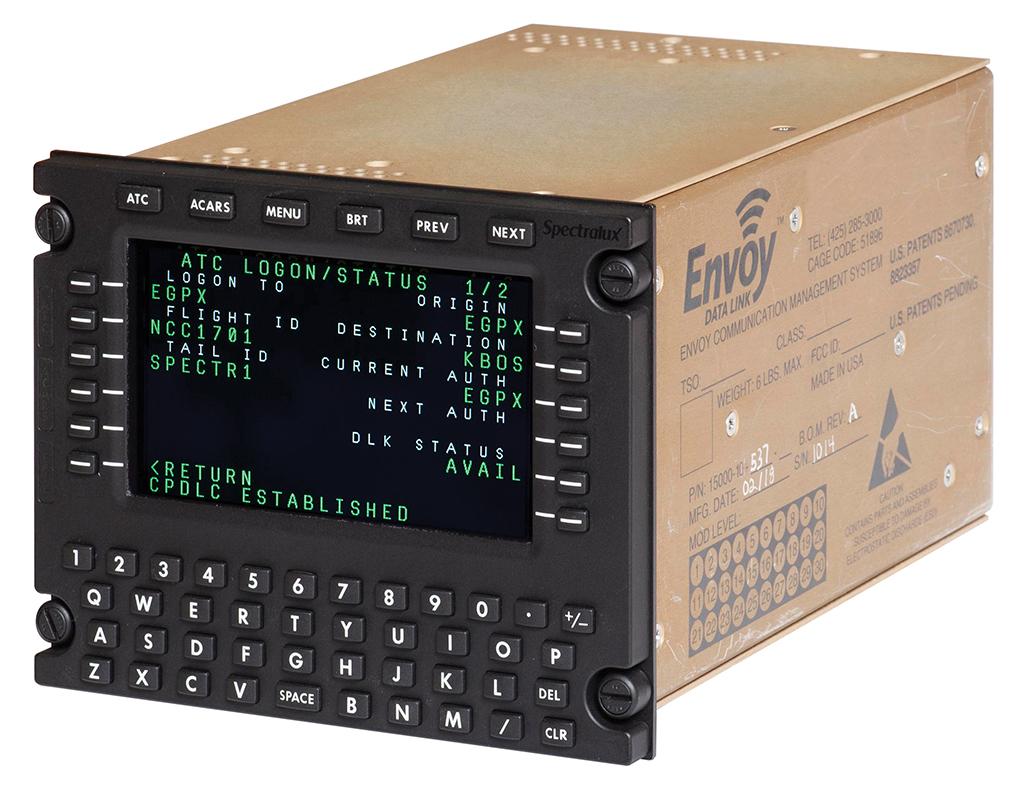
Among the many companies and individuals, inflight connectivity (IFC) providers have been hit hard by the COVID-19 pandemic. Travel restrictions, continuing concerns about airborne particle transmissibility and the sudden wide-scale embrace of virtual meeting technologies combined to dramatically reduce airline travel this year, with carrier traffic down by 50% or more from 2019 levels. Business aviation travel also collapsed in the first half of 2020.
Consequently, about one-third of Gogo’s 5,700 business jet air-to-ground customer accounts cut their spending, including 940 account suspensions and more than 750 service-plan downgrades. With the flood of red ink rising, the company sold off its commercial aviation service to Intelsat (more on this later).
The extended outlook for IFC activity depends largely on how quickly business aviation and, more significantly, the airlines return to a semblance of normalcy, which could take years. Nevertheless, there are bright spots and significant developments in connected aviation. What follows is our annual summary of IFC product and services trends and developments.
Let’s begin with Wi-Fi. Inflight connectivity in today’s business aircraft is viewed by many as an essential tool, but we wondered how much of the fleet was so equipped.

“We were surprised to learn that only 34% of the worldwide business jet fleet currently listed for sale were identified as Wi-Fi-equipped,” observed Rolland Vincent, a well-known business aviation consultant and creator and director of the Jetnet iQ market reports and summits. Jetnet conducts a proprietary global survey of 500+ aircraft owners and operators every quarter to measure the pulse of the community.
Vincent said that while installing Wi-Fi systems, particularly on older and lower-valued aircraft, can be complex and costly, “it is becoming increasingly clear that no office in the sky is complete without a way to stay connected. Whether you call it high-speed data, broadband or simply Wi-Fi, inflight connectivity in today’s business aircraft is essential for taking care of business.
He explained the finding that only one-third of business jets are so equipped was based upon an assessment of more than 2,000 aircraft on the market at the time of the poll. And that review of “a pretty diverse fleet” suggested the unequipped aircraft tended to be older. “My sense is that owners/operators are more than aware of the demand from the back of the cabin,” he noted, “but [they] need to make rational evaluations of the aircraft residual value in relation to the costs of an upgrade, and, of course, the availability of STCs.”
By contrast, “With newer models, it is pretty clear that a large majority of buyers are loading up their aircraft with the latest/greatest avionics and cabin systems, as well as cost-per-hour program subscriptions from the outset.”
Other factors to consider are whether the aircraft’s cabin management system (CMS) provides access to all media installed without traditional Wi-Fi, and if the operator plans to add Wi-Fi upon the next aircraft acquisition or cabin connectivity upgrade.
IFC Provider Roundup
Alto Aviation
A New System Master Controller
Alto Aviation, a Sterling, Massachusetts, inflight audio and entertainment system manufacturer, recently expanded its cabin product line of systems interfaces and controllers with the Alto System Master Controller (SM-1070). It is a module designed to link aircraft CMS components with various communication protocols. The unit was developed by in-house cabin systems engineers to provide wireless remote control of components, via personal electronic devices (PEDs) or touchscreens, using the existing Wi-Fi or local area network (LAN) system on board the aircraft. Devices supported include a range of Alto products as well as other suppliers’ audio and entertainment offerings.
The SM-1070 provides control of a variety of digital devices using Alto’s Cadence keypads and supports PED-based remote control with Apple or Android operating systems. The new System Master Controller also acts as a universal bus translator, providing bus interface connectivity between existing Alto products and products from other manufacturers, and supports RS-485/RS-422, RS-232, Ethernet, CAN (controller area network), IR control (infrared) and ARINC 429 protocols.
Collins Aerospace
Connecting With Iridium Certus
Collins Aerospace recently connected and transmitted data to an orbiting Iridium satellite using the Iridium Certus service. The feat was accomplished using Collins’ new Active Low Gain Antenna (ALGA), making it the first successful airborne equipment transmission of this type over the upgraded Iridium constellation’s L-band broadband service.
This latest satcom system from the Cedar Rapids, Iowa, manufacturer is in development and expected to be available to operators in 2022. Collins will provide all of the airborne hardware for the new system, including the satcom data unit (SDU), SDU configuration module (SCM) and the antenna. Depending on the operator’s bandwidth requirements, either a low-gain or high-gain antenna can be included, providing L-band bandwidth to 176 Kbps or 704 Kbps, respectively.
In addition to faster speeds, the new system should have a lower weight and smaller antenna footprint for minimum drag and lower power usage than legacy systems.
LuxStream on Gulfstreams
Western Jet Aviation, based in Van Nuys, California, and Collins expect to soon complete KuSAT-2000 STCs that will enable LuxStream connectivity service on popular Gulfstream models. Platforms include the Gulfstream G350, G450, GV and G550 aircraft. LuxStream, launched in late 2019, offers speeds of up to 25 Mbps in the U.S. and 15 Mbps globally via SES’s managed Ku-band satellite network.
The new product is available as part of Collins’ ARINCDirect portfolio of services. It will provide customers with bandwidth capable of supporting multiple streams of ultra-high-definition content, all while fellow passengers are concurrently running other apps. Available with flexible pricing, it is a one-point, turnkey system with both hardware and service provided by Collins.
LuxStream uses SES’s global geostationary high-throughput satellite network. Its performance has been validated extensively with more than 25 passengers able to easily access the internet and stream entertainment content to their personal devices at 25 Mbps simultaneously.
Additional LuxStream STCs were anticipated by the end of the third quarter of 2020.
Duncan Aviation
Gogo Biz 4G Deal Still On
To ensure the best connectivity experience for its Gogo Business Aviation Avance L5 inflight Wi-Fi system customers, Duncan Aviation is extending the free-of-charge period for Gogo Text & Talk and Gogo Vision inflight entertainment to one year. The recent Intelsat purchase of Gogo’s commercial services will not affect any of Duncan’s business with Gogo.
The limited-time offer allows operators to install the Avance L5 hardware that connects to the Gogo Biz 4G network, delivering faster speeds and enhanced network capacity. Duncan then gives them 12 months of unlimited access to Gogo Text & Talk and Gogo Vision subscription services.
Gogo Text & Talk lets an aircraft’s crew and passengers use their personal smartphones and devices to call and text in the air just like they do on the ground. Meanwhile, Gogo Vision lets passengers watch movies and television shows, read popular magazines, view flight maps and more on their own devices during flight.
Duncan Aviation has nine STCs for the Avance L5 system that cover the Wi-Fi certification and full equipment and antenna installation required to provide inflight connectivity. These STCs are available for a growing list of aircraft makes/models including:
Bombardier Global Express, XRS, 6000, and 5000; Challenger CL-650, CL-605, CL-604, CL-601-3A and CL-601-3R; and Challenger 300 and 350.
Cessna Citation 680.
Dassault Falcon 900, 900EX (EX, EASy, LX, DX), 2000 and 2000EX (EX, EASy, LX, DX, LXS, S).
Gulfstream GIV, G300, G400, GIV-X, G350 and G450.
The Duncan Aviation STCs have been used for nearly 200 Avance L5 system installations. The company has installed more than 1,000 Gogo connectivity systems over the years and is Gogo’s exclusive AOG service partner.
Duncan can install the Gogo Avance L5 system at its three main facilities (Battle Creek, Michigan; Lincoln, Nebraska; and Provo, Utah) and at its 28 avionics satellite shops and stations.
Global Eagle Entertainment
Airconnect Go 2.0 Launched
Global Eagle Entertainment has launched Airconnect Go 2.0, the second generation of its battery- or aircraft-powered portable, wireless inflight entertainment system, one that lets passengers stream media content to their own devices.
Airconnect Go 2.0 reduces touchpoints in flight as passengers do not need to engage with onboard screens, instead using their own smartphone, laptop or tablet to access over 3,500 hr. of content including movies, TV series, music, podcasts, digital publications, games and an interactive flight tracker.
The upgrade provides 15 hr. of continuous service and expandable storage capacity, double that of the previous iteration. There is no hardware to install and it delivers instant results, offering curated content to entertain travelers.
Global Eagle’s second-generation Airconnect Go has no hardware activation fee, is compact and weighs 7 lb.
New, lower pricing for optional accessories is available, including an aircraft-powered version, a PA Pause Dongle to automatically pause media playback during onboard announcements, and a mounting tray.
Gogo
Turns Total Focus on BizAv
Aviation connectivity provider Gogo is selling its commercial aviation unit to bankrupt satellite services provider Intelsat for $400 million in a deal that may help the latter return to a viable business while Gogo focuses on its fiscal health and business aviation services. The transaction, which is expected to close before the end of first quarter 2021, remains subject to customary closing conditions and regulatory approvals.
The deal will combine Intelsat’s high-throughput satellites with Gogo’s 2 Ku antenna to better position Intelsat in an inflight connectivity market that is expected to grow by double-digits in the long-term, despite COVID-19.

Proceeds from the deal will be used to improve Gogo’s finances, allowing it to invest in new services in the “attractive and underpenetrated” business aviation market, including Gogo 5G, according to the Broomfield, Colorado, company.
Meanwhile, Gogo lost its patent suit against SmartSky Networks last April. Gogo had filed the challenge before the U.S. Patent and Trademark Office against a patent that SmartSky said covers some of the most-essential features of its air-to-ground (ATG) network.
Gogo Avance Installed on 1,000+ Business Jets
Things aren’t all bad, however. In addition to 1,000 previous L5 installations, Gogo is nearing 450 ATG installations for its Avance L3 system. By the end of second quarter 2020, Gogo Business Aviation reported 5,399 aircraft flying with its systems onboard.
Gogo Avance L5 provides 4G service to business aircraft of all types and sizes and offers an upgrade path to Gogo 5G service when it launches. From the time Avance L5 launched in fourth quarter 2017, more than 325,000 flights have taken off with the system onboard, flying more than 420,000 hr. and 211 million mi., with users consuming 150 million megabytes of data.
Gogo, its OEM partners and dealers have seen adoption of both Avance L5 and Avance L3 on a retrofit basis with more than 200 STC approvals from the FAA. Both the L3 and L5 systems are factory-installed options on the majority of business jets of all types and sizes from the world’s largest business aircraft manufacturers.
The Gogo Avance L5 system connects to the Gogo Biz 4G network, delivering faster speeds and enhanced network capacity and enabling activities such as livestreaming video and audio, videoconferencing, on-demand movies, faster web browsing, personal smartphone use, real-time data for cockpit apps, and remote diagnostics and support while in flight.
Early in 2018, Gogo launched its Avance L3 system that delivers the benefits of the Gogo Avance platform to passengers and flight departments in a lightweight, smaller form factor compared to the L5. Avance L3 allows users to customize their inflight experience based on their unique needs and can be installed on business aircraft of all types including turboprops and light jets.
Also, on July 20, 2020, Gogo lowered the altitude at which passengers can begin using its connectivity services — from 10,000 ft. AGL to 3,000 ft. AGL — for a significant portion of its ATG fleet.
Satcom Direct
A New Network Operations Center
With a larger footprint, the addition of cutting-edge technology and installation of a digital wall displaying real-time global customer connectivity activity, Satcom Direct has completed an upgrade to its Network Operations Center (NOC) at its headquarters in Melbourne, Florida.

The new facility is designed to intelligently aggregate, collate and analyze the increasing amounts of data generated by business aircraft activity. Information collected from the SD Xperience nose-to-tail portfolio of hardware, software and infrastructure solutions helps ensure the center’s personnel are fully aware of the network status of each customer’s aircraft globally.
By combining artificial intelligence (AI) and machine learning, data is aggregated and displayed on the enlarged screen. The upgraded technology can identify systemic issues across the partner satellite networks to support implementation of remedial measures and reduce user downtime if an issue occurs.
MySky Launched, World Fuel Interfaces
Satcom Direct is also offering a pair of new applications to assist its clients.
MySky, an AI-powered spend management platform designed for the private aviation industry, and Satcom Direct have launched a strategic alliance enabling ready access to real-time data for private aviation. Subscribers to MySky and SD get an all-encompassing approach to aircraft management that combines operational and financial information into a single source of data, the SD Pro platform.
MySky provides access to financial data and proprietary IT tools that can help owners and operators reduce costs, refine spending and improve the overall aircraft ownership experience. SD Pro’s digital management dashboard provides relevant and timely information about pre- to post-flight aircraft performance to aircraft operators around the world.
In addition, SD customers can view their contracted fuel pricing at each stop on their trip. World Fuel Services subscribers can integrate their data into Satcom Direct’s SD Pro PreFlight module. The feature centralizes planning information from multiple sources into a single dashboard. Operators can verify crew and aircraft availability, view trip calendars and communicate trip changes with one central login. Key trip details such as passenger profiles and standard industry fare levels are also captured to optimize post-flight reporting.
New Tail-Mounted Antennas
Satcom Direct is also expanding its hardware portfolio with the launch of a new tail-mounted antenna series. The system offers two variants for operation in Ku- or Ka-band frequencies. The former variant is expected to be available in early 2021, followed by the Ka-band version later in the year. SD has partnered with Inmarsat for Jet ConneX service and Intelsat for FlexExec connectivity.
SkyTrac
Production of Iridium Certus Terminals
Iridium Communications has announced SKYTRAC as the newest aviation value added manufacturer (VAM) for the Iridium Certus 9810 transceiver. Already an Iridium Certus service provider, SKYTRAC will now be able to both manufacture equipment and provide service to customers across the aviation industry.
Designed for optimal size, weight and power (SWaP), SKYTRAC’s new SDL-350 terminal will be a 2-MCU satellite communications system, planned for market introduction in 2021. The new terminal will offer broadband speeds of up to 352 Kbps both to and from the aircraft. Built for the only L-band broadband platform providing truly global connectivity, the SDL-350 also takes advantage of the Iridium Certus platform’s flexibility to scale device speeds, sizes and power requirements based on the needs of the end-user.
SKYTRAC is also producing the ISAT-200A-08 terminal for the Iridium Certus 9770 with 22/88 Kbps mid-band speeds. That should bring a 10x bandwidth improvement, as compared to Iridium’s narrowband services, to operators using internet voice communications and streaming, while providing real-time alerts, advanced situational awareness and more.
The SDL-350 terminal is designed to handle applications like flight data monitoring, onboard electronic flight bag (EFB) capabilities, real-time health and usage monitoring (HUMS), medical data transfer, Voice over Internet Protocol (VoIP) communications and Global Aeronautical Distress and Safety System (GADSS) compliance functions. It is intended to aid in situational awareness, connected aircraft solutions, large file transfers and more, depending on the terminal’s bandwidth level.
The new terminals should provide capabilities for a wide range of operators including those involved in aerial firefighting, executive transport, emergency medical services/search and rescue, oil and gas production, and law enforcement, among others.
SmartSky Networks
Partnering With IATA to Tackle Turbulence
In order to enable safer, smoother flights aboard commercial and business jets, SmartSky Networks is collaborating with the International Air Transport Association (IATA) to bring its open digital services to the association’s Turbulence Aware platform.
Turbulence Aware helps aircraft operators mitigate the impact of turbulence, a leading cause of passenger and crew injuries and higher fuel costs each year, by pooling and sharing anonymized turbulence data from multiple participating airlines and thousands of daily flights.
SmartSky intends to significantly broaden the scope of the program by introducing business jet-reported turbulence data for the first time and thereby grow global live turbulence coverage beyond the data currently received from commercial airlines. As a result, business aviation operators can now be alerted to turbulence during flight planning and while in flight.
Powered by SmartSky’s Skytelligence, and distributed over its ATG network, the turbulence service will enable pilots and control centers to improve the safety of flight operations, while passengers will experience smoother, more efficient flights.
Spectralux Avionics
TSO Approval for Envoy
Following TSO approvals from the FAA, Redmond, Washington-based Spectralux Avionics’ Envoy very-high-speed digital data-link communications unit is available to business jet operators. It provides global Aeronautical Operational Control (AOC) Aircraft Communications Addressing and Reporting System (ACARS) messaging through a highly customizable user interface. Envoy’s certification also paves the way for Spectalux’s Envoy Dual Stack unit.

Envoy includes three integrated avionics modules: a communications management unit (CMU), a VHF data radio (VDR) and a multipurpose control and display unit (MCDU). Envoy also features software applications for global data-link communications.
“This TSO approval is a significant milestone in the Envoy Data Link family,” said Spectralux President Scott McCammant. “Envoy is a standalone unit that enhances safety and efficiency for global communications, navigation and surveillance (CNS) air traffic management (ATM). Envoy provides AOC ACARS functions over VHF and satcom, and, most importantly, Envoy is available now.”
Viasat
Enhanced Ka-Band Connectivity for Business Aviation
IFC provider Viasat has removed internet speed limits delivered to the aircraft across all of its business aviation Ka-band service plans. Additionally, the Carlsbad, California, company has doubled its minimum committed internet speed to the aircraft for the same Ka-band service plans. That’s intended to improve the experience with apps such as videoconferencing, accessing VPN/cloud content, email, high-definition streaming services, live TV and more. Ka-band customers also have the option to subscribe to Viasat Unlimited Streaming, which allows passengers to access online media services without impacting monthly data allowances.
The Viasat Ka-band business aviation IFC system uses the company’s Global Aero Terminal 5510, which taps into the ViaSat-1, ViaSat-2 and European Ka-band satellite platform, and is expected to be with Viasat’s next-generation satellite systems. That allows customers to install the Viasat shipset and subscribe to a Viasat service package now, with assurances that they can access additional satellite capacity, including larger data volumes and expanded coverage, once Viasat launches its ViaSat-3 satellite constellation.
In July, Viasat announced that its high-speed Ka-band business aviation service will be available aboard new and in-service Bombardier Challenger 350 jets, as well as on in-service Challenger 300s.
In August, Viasat’s business aviation IFC system received STC approval from the FAA through Gulfstream Aerospace, certifying the use of its Ka-band system on the Gulfstream G650 and G650ER. When combined with its prior FAA STC for the Viasat Ku-band system, Gulfstream operators get a tail-mounted dual-band (Ka/Ku) service.
Business aviation has experienced market turbulence in the past and will likely do so again from time to time. It’s just part of the environment. Meanwhile, keep in mind that inflight connectivity has been transformative, helping passengers stay productive and engaged while traveling.
Great connectivity relies on more than reliable high-speed networks and data systems. It requires the expertise of thousands of people who turn the capability into practical and meaningful activities. Let them know you need them.
Persevere
“When you come to the end of your rope, tie a knot and hang on.”
— Franklin D. Roosevelt




